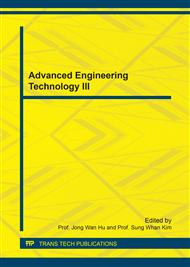p.118
p.125
p.131
p.137
p.143
p.149
p.155
p.161
p.169
Optimum Design of Vent Pipe of Fire Station by Using Analytical Approach of Heat Transfer
Abstract:
This paper presents the optimal design of vent pipe in a fire station by using design of experiments and analytical method of heat transfer theory. In order to calculate formulation without using tables, equations in terms of temperature are developed for five air properties such as specific heat, thermal conductivity, kinematic viscosity, density and Prandtl number. It is shown that the equations accurately approximate the variations of air properties in terms of temperature. Series of design analysis are performed under considering the process parameters such as inlet temperature, pipe diameter and heat transfer rate. Orthogonal arrays of L27 are used. The signal-to-noise (S/N) and analysis of variance (ANOVA) are utilized to determine the effect of parameters on objective functions, surface temperature and outlet temperature. From the results it is clear that inlet temperature is prominent on objective function.
Info:
Periodical:
Pages:
143-148
Citation:
Online since:
June 2017
Authors:
Keywords:
Price:
Сopyright:
© 2017 Trans Tech Publications Ltd. All Rights Reserved
Share:
Citation:


